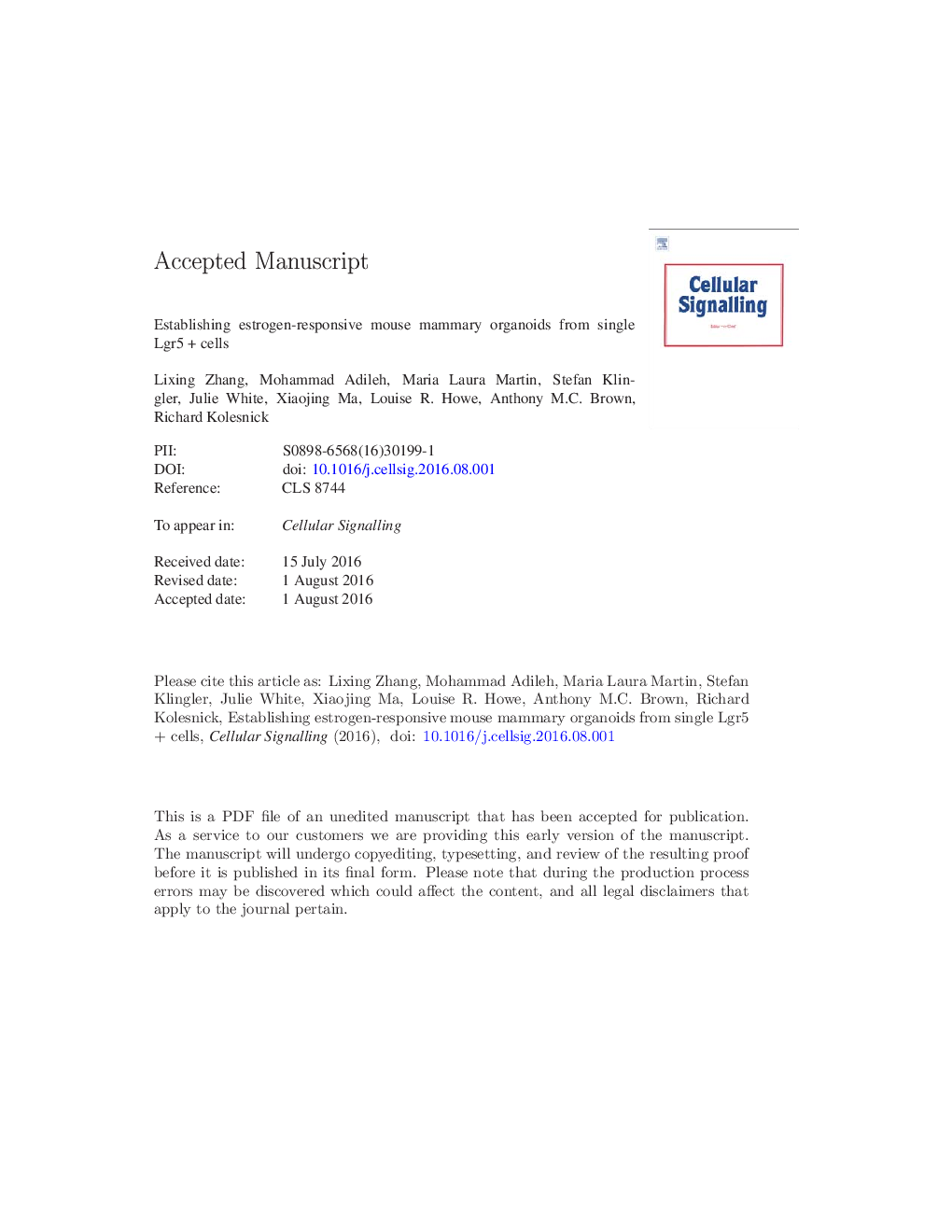| کد مقاله | کد نشریه | سال انتشار | مقاله انگلیسی | نسخه تمام متن |
|---|---|---|---|---|
| 5509454 | 1538515 | 2017 | 38 صفحه PDF | دانلود رایگان |
عنوان انگلیسی مقاله ISI
Establishing estrogen-responsive mouse mammary organoids from single Lgr5+ cells
دانلود مقاله + سفارش ترجمه
دانلود مقاله ISI انگلیسی
رایگان برای ایرانیان
موضوعات مرتبط
علوم زیستی و بیوفناوری
بیوشیمی، ژنتیک و زیست شناسی مولکولی
زیست شیمی
پیش نمایش صفحه اول مقاله

چکیده انگلیسی
Recent evidence suggests that mammary cells expressing R-spondin receptor and Wnt pathway regulator Lgr5, regarded as a stem cell marker in multiple tissues, might represent mammary stem cells (MaSCs). Whether L gr5 marks a multipotent subpopulation of Lin-CD24low/medCD49fhigh MaSCs remains controversial. To some extent the differing results reflect different assays used to assess properties of stemness, including lineage tracing in vivo, mammosphere culture, and mammary fat pad transplantation assays. To address this issue directly, we isolated Lgr5+ cells from mammary glands of Lgr5-lacZ mice and established organoids based on principles adapted from studies of Wnt-driven Lgr5+ cell populations in other organs. Mammary organoids were grown from single Lgr5+ mammary cells in Matrigel, the substratum of choice for intestinal organoids, and in a growth factor cocktail containing EGF, Wnt3a and R-spondin, designed to optimally activate the endogenous Wnt signaling program of stem cells. Colonies derived from single Lgr5+ cells manifest at least four distinct cell populations: Lgr5+ and Lgr5- basal cells and c-Kit+ and c-Kit- luminal cells that spontaneously organize into a ductal structure with basal cells around the periphery and luminal cells lining an interior cavity, reminiscent of normal mammary duct structure. Lgr5+ cell-derived organoids were sustainable during prolonged passaging. In contrast, although Lgr5- cells expand into primary colonies, colony-forming efficiency immediately dissipated upon passaging. Furthermore, reproductive hormones induce epithelial cell proliferation resulting in marked increases in lumen diameter accompanied by squamous transdifferentiation. We propose this estrogen-responsive, self-organizing duct-like structure derived from single murine Lgr5+ mammary cells represents a “mini-breast” organoid.
ناشر
Database: Elsevier - ScienceDirect (ساینس دایرکت)
Journal: Cellular Signalling - Volume 29, January 2017, Pages 41-51
Journal: Cellular Signalling - Volume 29, January 2017, Pages 41-51
نویسندگان
Lixing Zhang, Mohammad Adileh, Maria Laura Martin, Stefan Klingler, Julie White, Xiaojing Ma, Louise R. Howe, Anthony M.C. Brown, Richard Kolesnick,